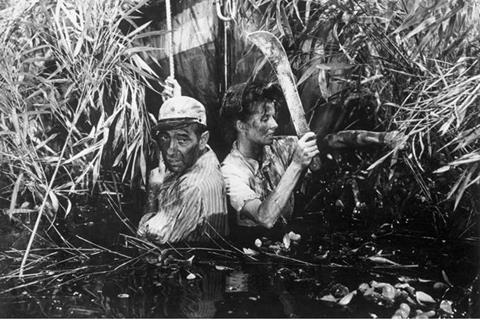A look back at the firms that have dominated the industry over the last decade, and the changing fortunes of contractors and housebuilders
This week we publish the Top 150 Contractors and Housebuilders 2013, which reveal a growing divide between the industry’s haves and have-nots but overall some encouraging headline figures. While overall construction output fell 8% last year, revenues among the biggest firms rose by 2.9%.
For this week’s archive feature, we decided to take a look back year-by-year at the last decade of top contractors and housebuilders, and see how things have changed.
Below is a snapshot of the top five firms every year dating back to 2003, along with a link to the full tables. We’ve also picked out some statistics, facts and sentiments that were reported alongside the tables at the time - and the illustrations that were published in the magazine.

2012
| Position | Company | Total turnover |
|---|---|---|
| 1 | Balfour Beatty | 11,035,000 |
| 2 | Carillion | 5,051,200 |
| 3 | Laing O’Rourke | 3,320,000 |
| 4 | Interserve | 2,319,600 |
| 5 | Morgan Sindall | 2,226,600 |
Full table >>
- The Top 150 firms saw an 8% rise in their collective top line and a 75% increase in pre-tax profit amounting to almost £2.3bn. This was partly thanks to a huge improvement in housebuilding, and a long period of belt-tightening
- The picture for contractors was mixed, with Balfour Beatty reporting turnover up 5.1% in the year to 31 December 2011 but Laing O’Rourke seeing it tumble by 6.2% for the year ended 31 March 2011
- Analysts pointed to avoiding debt, looking at cost bases and winning work in expanding sectors as the keys to staying afloat.

2011
| Position | Company | Turnover |
|---|---|---|
| 1 | Balfour Beatty | 10,541,000 |
| 2 | Carillion | 5,139,000 |
| 3 | Laing O’ Rourke | 3,526,100 |
| 4 | Taylor Wimpey | 2,603,300 |
| 5 | Morgan Sindall | 2,101,900 |
Full table >>
- Listed firms put out a flurry of up-beat sounding messages, but not everyone was convinced: “The plcs are all talking it up”, said boss of Willmott Dixon Rick Willmott.
- Steelwork contractor Severfield Rowen saw its turnover drop from nearly £400m in 2008 to £267m in 2011
- Industry forecasters predicted 2013 as the year things would start to turn around. Bam chief executive Graham Cash summed it up by saying: “I’m not a pessimist, but it’s going to get tougher before it gets better.”

2010
| Position | Company | Turnover |
|---|---|---|
| 1 | Balfour Beatty | 10,339,000 |
| 2 | Carillion | 5,426,500 |
| 3 | Laing O’Rourke | 4,087,100 |
| 4 | Tayor Wimpey | 2,595,600 |
| 5 | Barratt | 2,285,200 |
Full table >>
- Andrew Wyllie, chief executive of Costain, shared his thoughts on the state of play: “The general consensus is that the economy has turned a corner after a pretty challenging couple of years. There is more optimism than pessimism.” However, others put this down to the catastrophic drop off the year before
- Around the time the Top 150 was published, the ONS revealed a 6.6% rise in construction output from Q1 to Q2, the biggest since 1963
- McLaren Construction, number 111 in the Top 150, saw an 88% rise in pre-tax profit in the year to July 2009. Managing director Philip Pringle cited a proactive approach, saying the firm had “gone out and created business.”

2009
| Position | Company | Turnover |
|---|---|---|
| 1 | Balfour Beatty | 9,486,000 |
| 2 | Carillion | 5,205,800 |
| 3 | Laing O’Rourke | 3,603,100 |
| 4 | Barratt | 3,554,700 |
| 5 | Taylor Wimpey | 3,467,700 |
Full table >>
- Most of the firms in this year’s league tables were ranked on a financial year that ended in 2008 - when contractors were working on jobs they’d won two years previously. Therefore, this year’s results reflected the ‘calm before the storm’, with output predicted to fall by at least 16-17% in 2009
- Housebuilders however were already showing the effect of the downturn in their results, with 14 out of the 16 firms that made a loss largely or entirely housebuilders
- Second in the Top 150, Carillion cut its debt from £227m in December 2008 to £150m by selling its IT business and two investments in PFI projects. It remained active in rail, nuclear and waste.

2008
| Position | Company | Turnover |
|---|---|---|
| 1 | Balfour Beatty | 7,488,000 |
| 2 | Taylor Wimpey | 4,105,000 |
| 3 | Carillion | 3,951,700 |
| 4 | Barratt | 3,046,100 |
| 5 | Laing O’Rourke | 3,037,330 |
Full table >>
- At the time the Top 150 tables were published, housebuilders were shedding workforces and developers shelving projects
- Building asked a selection of veterans who made it through the last crash about what lay ahead. The late Alan Cherry, chair of Countryside Properties, was chief executive of the firm during the last crash: “I – as well as the rest of the Countryside management – have a few battle scars from the last two crashes and that means we’re well prepared,” he said. “A year ago we started selling off interests in certain projects.”
- Vaughan Burnand, chief executive at Shepherd Construction, commented: “Back in the early nineties we let market forces take over – tendering was all about cost, construction was much more commoditised and to win work contractors just dropped their prices. The major contractors are more sophisticated these days. However, the lads that deal in the smaller stuff could find the situation vicious.”

2007
| Position | Company | Turnover |
|---|---|---|
| 1 | Taylor Wimpey | 6,826,400 |
| 2 | Balfour Beatty | 5,852,000 |
| 3 | Barratt | 3,762,800 |
| 4 | Carillion | 3,593,400 |
| 5 | Amec | 3,229,200 |
Full table >>
- Balfour Beatty took over the number one spot in terms of contracting turnover from a slimmed-down Amec. This was largely as a result of its international acquisition strategy, buying US group Centrex Construction which would add nearly £2bn in revenues
- Salaries were up 37% in three and a half years at Raven Mount, the housebuilding vehicle of Anton Bilton
- Scottish entrepreneur Stewart Milne was the best-paid director in the industry, although his salary only went up 5.2% compared with 33% in 2006.

2006
| Position | Company | Turnover |
|---|---|---|
| 1 | Amec | 4,942,500 |
| 2 | Balfour Beatty | 4,938,000 |
| 3 | Taylor Woodrow | 3,556,400 |
| 4 | Bovis Lend Lease | 3,281,495 |
| 5 | Wimpey | 3,003,200 |
Full table >>
- Amec made a pre-tax writedown of £78m in June but narrowly edged out Balfour Beatty to remain the biggest contractor by turnover
- Balfour Beatty was in the midst of an aggressive growth strategy, having just bought regional contractor Birse for £32m at the time the Top 150 tables were published
- Severfield Rowen, ranked 65 in the Top 150 table by turnover, was enjoying good margins and reinvesting heavily in the business.

2005
| Position | Company | Turnover |
|---|---|---|
| 1 | Amec | 4,816,400 |
| 2 | Balfour Beatty | 4,171,000 |
| 3 | Taylor Woodrow | 3,361,200 |
| 4 | Bovis Lend Lease | 3,155,360 |
| 5 | Wimpey | 3,005,700 |
Full table >>
- This year saw the contracting side of the industry undergoing a period of rapid change, with the main aim being diversification
- John Dodds, chief executive of Kier, said the key was to evolve a business that distributes risk over sectors with differing business cycles. Despite £1.2bn of its £1.5bn turnover coming from its construction division, the company had been carving itself out a reputation in the housebuilding and property industries
- Taylor Woodrow also raked in £500m of its £3.4bn turnover from construction and property although it was still predominantly a housebuilder.

2004
| Position | Company | Turnover |
|---|---|---|
| 1 | Amec | 4,712,700 |
| 2 | Balfour Beatty | 3,678,000 |
| 3 | Wimpey | 2,878,500 |
| 4 | Taylor Woodrow | 2,669,400 |
| 5 | Barratt Developments | 2,171,000 |
Full table >>
- The league tables offered some cheer for housebuilders, with the top 25 in the field seeing their average margins increase to 17.6% in 2003 from 14.8% the previous year
- All but one of the top 10 housebuilders by sales price saw the price of their average unit increase on 2002
- The top 10 contractors generated a combined contracting turnover of £13.6bn, up less than £500m on 2002.

2003
| Position | Company | Turnover |
|---|---|---|
| 1 | Amec | 4,381,100 |
| 2 | Balfour Beatty | 3,441,000 |
| 3 | Wimpey | 2,600,100 |
| 4 | Taylor Woodrow | 2,215,800 |
| 5 | Carillion | 2,008,700 |
Full table >>
- This year’s league tables revealed that, since 1995, the income of the highest paid directors at the UK’s leading contractors had increased 101% - taking home an average of £427,000 in 2002. The average construction worker saw a wallet expansion of 47% to £27,200 in 2002
- Berkeley chief executive Tony Pidgley received £1.47m in 2002 and argued that it reflected the success of the housebuilder
- Brian Staples, former chief executive of Amey, received a £287,000 pay-off in salary and pension contributions after the firm’s year-long meltdown. The Guardian described the settlement as ‘controversy’.



























No comments yet